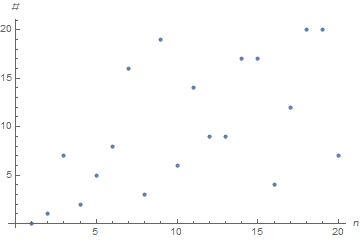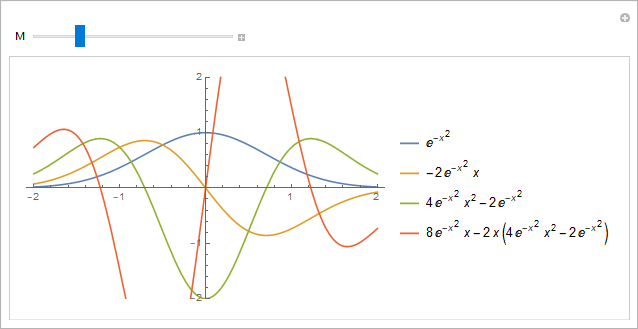Informatics1-2018/HW6
(Új oldal, tartalma: „== 1. Exercise == '''3 points''' The [https://en.wikipedia.org/wiki/Collatz_conjecture Collatz] or ''3n+1'' problem is the following: * Let ''n'' be a positive integer…”)
Újabb szerkesztés →
A lap 2018. november 20., 21:14-kori változata
Tartalomjegyzék |
1. Exercise
3 points
The Collatz or 3n+1 problem is the following:
- Let n be a positive integer.
- Let g(n) = n/2 is n is even and 3n+1 is odd.
- Then one can iterate g over-and-over for any given number. For example starting with 98:
{98, 49, 148, 74, 37, 112, 56, 28, 14, 7, 22, 11, 34, 17, 52, 26, 13, 40, 20, 10, 5, 16, 8, 4, 2, 1}
It is an interesting and unproven conjecture that starting from any number, you will reach 1 sooner or later. In the example above it took 25 steps. For example 5 -> 16 -> 8 -> 4 -> 2 -> 1 takes 5 steps.
Plot the number of steps needed to reach one against n, use ListPlot and n=1...1000
2. Exercise
a)
3 points
Define a function T with three arguments:
- f a function
- n a natural number
- x0 a real number
For this values calculate the nth Taylor polynomial of f around x0.
For example:
In[1]:= T[Exp,4,0] Out[1]:= 1 + x + x^2/2 + x^3/6 + x^4/24
Note that there is a buit-on function Series which does exactly this, but don't use that, implement it on your own! Use the sum symbol from the paletta and the Derivative.
b)
3 points
Ábrázoljuk a  függvény deriváltjait egy Plot-on.
Egy adott M-hez készítsük el azt az ábrát, ahol az
függvény deriváltjait egy Plot-on.
Egy adott M-hez készítsük el azt az ábrát, ahol az  ábrázolva van a [ − 2,2] intervallumon (ez összesen M+1 darab függvény).
Használjunk Manipulate-et az M állítására.
ábrázolva van a [ − 2,2] intervallumon (ez összesen M+1 darab függvény).
Használjunk Manipulate-et az M állítására.
Beküldés
Határidő: 2018.11.25 23:59
A megoldást egy Mathematic notebook formájában mellékeljétek a levélhez, ilyen névvel (A kurzus kódját és a login-nevet ki kell cserélni a sajátotokra):
T0_borbely_HF6.nb

